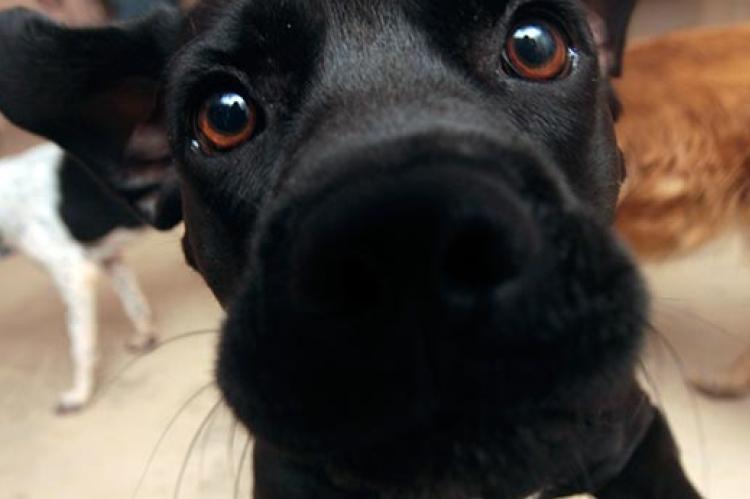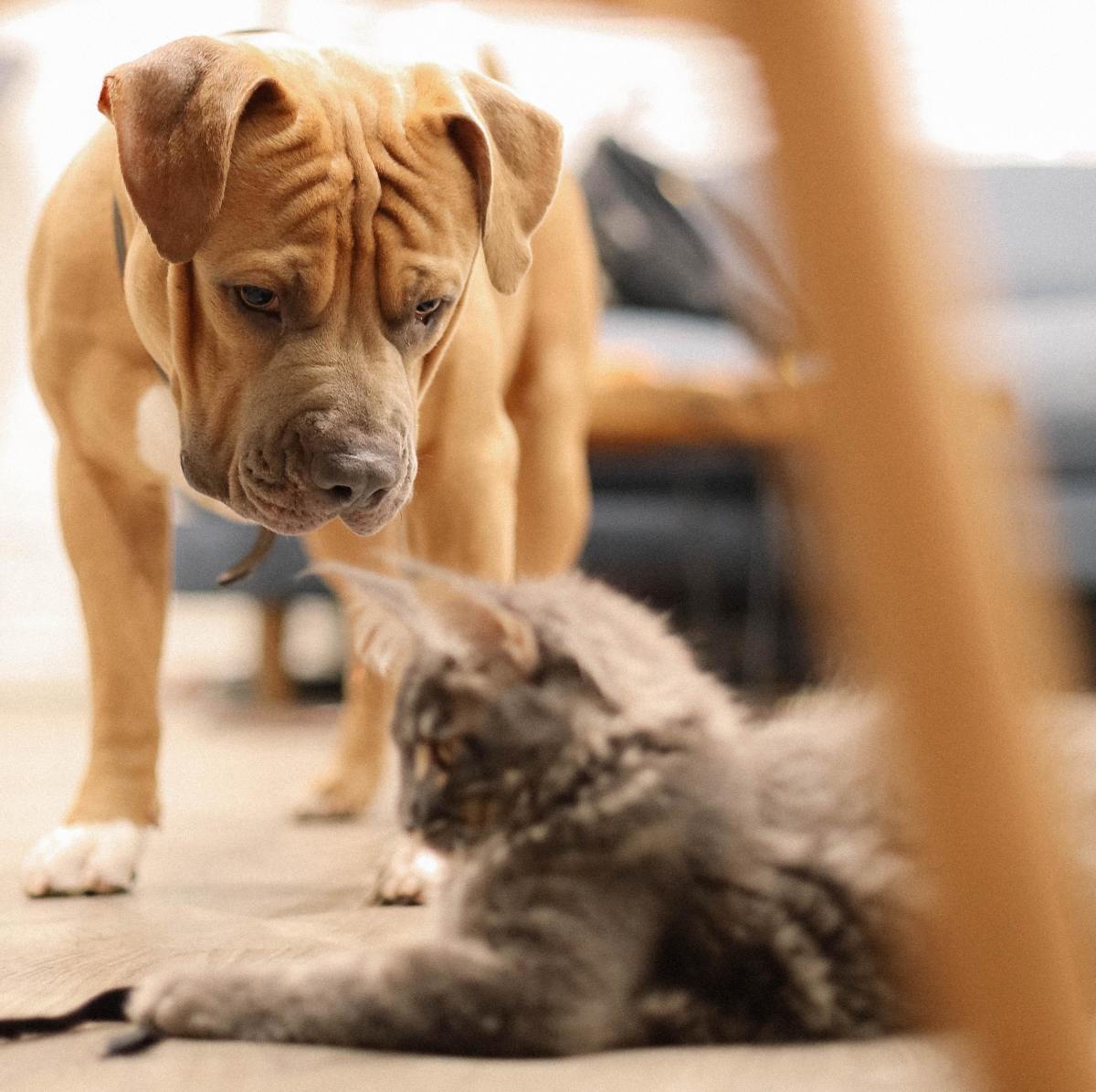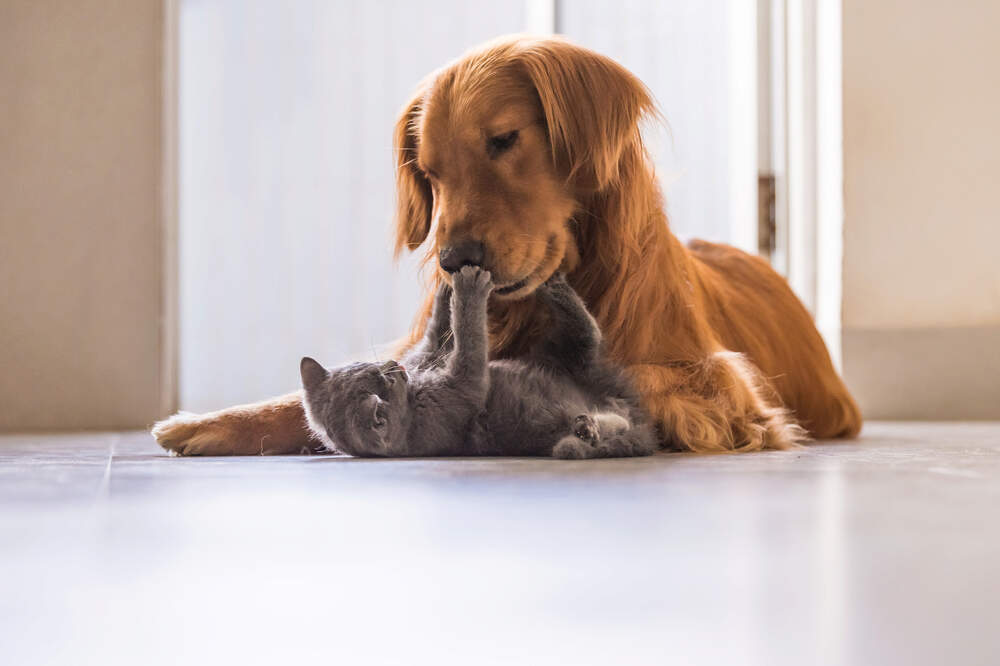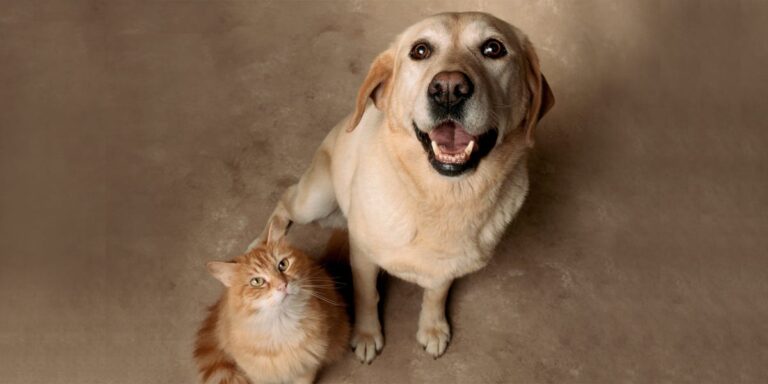To stop a dog from fixating on a cat, provide positive reinforcement and redirect their attention. Consistently use verbal cues and reward good behavior.
Introduce physical barriers between the dog and the cat, such as baby gates or closed doors. For walks, use a head halter or a front-clip harness to redirect the dog’s focus. Gradually desensitize the dog to the cat’s presence by keeping them in the same room while providing distractions and rewards.
Engage the dog in obedience training to strengthen their impulse control and focus on you as the pack leader. Avoid punishing or scolding the dog, as it may increase stress and worsen the fixation. Seek professional help if the fixation persists despite these efforts.

Credit: resources.bestfriends.org
Recognizing Fixation Behavior
Stop your dog from fixating on a cat with these helpful tips. Recognize fixation behavior and discover effective techniques to redirect your dog’s attention.
Dogs and cats can have a complicated relationship, and sometimes, a dog may become fixated on a cat, causing anxiety and potential harm to both animals. It’s essential to recognize the signs of fixation behavior early on to prevent any possible issues. By understanding the reasons behind this behavior, you can take appropriate steps to address it and ensure the safety and well-being of your pets.Identifying The Signs Of Fixation
When a dog fixates on a cat, certain behavioral patterns and body language cues can indicate their fixation. By being aware of these signs, you can intervene before the situation escalates.- Intense staring or prolonged eye contact
- Rigid body posture with ears perked forward
- Tail held straight and tense
- Hyperactive behavior or restlessness
- Excessive barking, growling, or whining
- Attempts to chase or lunge towards the cat
Understanding The Reasons Behind Fixation Behavior
To effectively address fixation behavior, it’s essential to understand the underlying reasons behind it. Dogs may fixate on cats due to various factors:- Prey Drive: Dogs are naturally inclined to chase and capture prey. Cats’ quick movements can trigger this instinct in some dogs.
- Fear or Anxiety: Dogs may become fixated on cats as a result of fear or anxiety towards them. This fixation could be their way of trying to establish control or distance themselves from perceived threats.
- Lack of Socialization: Dogs who haven’t been properly socialized with cats during their critical developmental stages may develop fixation behavior.
- Past Negative Experiences: A dog may fixate on a cat if they have encountered negative experiences with cats in the past, such as being scratched or attacked.

Credit: pethelpful.com
Training Techniques To Distract A Dog From Fixation
If your dog has a fixation on a cat, it can be a challenging behavior to address. Using effective training techniques to distract your dog from fixation is crucial for a harmonious coexistence between your pets. Redirecting attention using positive reinforcement, teaching the ‘Leave it’ command, and engaging the dog in interactive play are all effective methods to help your dog overcome fixation on a cat.
Redirecting Attention Using Positive Reinforcement
Positive reinforcement is a powerful tool in redirecting your dog’s attention away from fixating on a cat. When your dog shows interest in the cat, promptly redirect their attention to a desirable behavior using treats, toys, or verbal praise. By rewarding your dog for shifting focus, you’re teaching them that positive behavior results in positive outcomes, ultimately reducing fixation on the cat.
Teaching The ‘leave It’ Command
Training your dog to respond to the ‘Leave it’ command can help prevent fixation on the cat. Start by using treats to reinforce the command, gradually introducing distractions like a toy or a simulated cat object. With consistent practice, your dog will learn to respond to the ‘Leave it’ command, allowing you to redirect their attention away from the cat when needed.
Engaging The Dog In Interactive Play
Interactive play is an effective way to divert your dog’s focus from fixating on the cat. Incorporate toys that encourage active engagement, such as tug-of-war ropes or interactive puzzle toys. Through regular interactive play sessions, you can channel your dog’s energy and attention towards positive interactions, reducing fixation on the cat.
Desensitization And Counterconditioning
Desensitization and counterconditioning are effective methods to stop a dog from fixating on a cat. These techniques can help your dog to learn to be calm and relaxed around the presence of a cat, ultimately improving their behavior and reducing their fixation.
Gradually Exposing The Dog To The Cat
Introduce the dog and cat from a distance and gradually decrease the distance as they become more comfortable.Monitor their interactions closely and be ready to separate them if needed.Repeat this exposure regularly to help the dog to acclimate to the cat’s presence in a gradual and systematic way.
Creating Positive Associations With The Cat’s Presence
Reward the dog with treats or praise when they exhibit calm behavior around the cat.Use a calm and soothing tone to reinforce positive associations.Associate the cat’s presence with enjoyable activities, such as playtime or a meal, to help the dog form positive connections with the cat.
Management Techniques To Prevent Fixation
Dogs are instinctual creatures, and their prey drive can sometimes kick in when they see a cat. Fixation on cats can lead to unwanted behavior, such as chasing or even aggression. However, with the right management techniques, you can help your dog overcome this fixation and create a peaceful coexistence between your furry friends.
Using Barriers And Gates
Barriers and gates can be effective tools in preventing fixation on cats. By physically separating your dog from the cat, you can reduce the opportunity for fixation. Install baby gates or pet gates in strategic areas to create separate spaces for your dog and cat. This way, your dog can still see the cat, but they won’t be able to interact directly.
Another option is to use visual barriers, such as curtains or blinds, to block your dog’s view of the cat. This can be particularly helpful in areas where your cat likes to perch or roam, as it prevents your dog from fixating on the cat’s movements.
Using Distraction Techniques
Distraction techniques can redirect your dog’s attention away from the cat and onto something more appropriate. Keep a box of special treats or toys handy, and when you notice your dog fixating on the cat, quickly offer them a treat or engage them in play. This can help break their fixation and shift their focus onto something positive.
Interactive toys can be especially useful in keeping your dog occupied and mentally stimulated, reducing their fixation on the cat. Consider puzzle toys or food-dispensing toys that require your dog to work for their reward. These toys can keep your dog entertained for longer periods, giving your cat some space to move around without being fixated upon.
Implementing Crate Training
Crate training can be an effective tool in managing fixation and creating a safe space for your dog. A crate provides your dog with a den-like environment where they can retreat and feel secure. When you cannot directly supervise your dog or need to keep them separated from the cat, place them in their crate with a comfortable bed, toys, and a chew treat.
Gradually increase the time your dog spends in the crate, always providing positive reinforcement and rewards. This helps your dog associate the crate with positive experiences and reduces their fixation on the cat. It also allows your cat to roam freely without fear of being chased or bothered by the dog.
By using these management techniques, you can help your dog overcome their fixation on the cat, creating a harmonious environment for both your furry friends. Remember to be patient and consistent in your training efforts, as it may take time for your dog to fully adjust and learn new behaviors.
Seeking Professional Help
Stop your dog from fixating on your cat by seeking professional help. Professional trainers can offer effective solutions to prevent unwanted behavior and create a harmonious environment for both your furry friends.
Consulting With A Dog Trainer Or Behaviorist
If your dog’s fixation on a cat is causing distress or becoming unmanageable, seeking professional help is recommended. Consulting with a dog trainer or behaviorist can provide you with the expert guidance and techniques needed to address this issue effectively.
A dog trainer or behaviorist will have the knowledge and experience to assess your dog’s behavior, identify the triggers causing the fixation, and tailor a training plan to address the issue. They will observe how your dog interacts with cats and provide specialized strategies to redirect their attention and modify their behavior.
During your session with the professional, they might suggest the following techniques to help stop your dog from fixating on a cat:
- Positive Reinforcement Training: This technique involves rewarding your dog for displaying desired behaviors, such as focusing on you instead of the cat. Treats, praise, and play can be used as positive reinforcements to encourage your dog’s appropriate responses.
- Counterconditioning: With the guidance of a trainer or behaviorist, you can gradually expose your dog to cats in a controlled environment, implementing positive associations. This process helps your dog learn to associate positive experiences with cats, reducing their fixation and replacing it with more acceptable behavior.
- Desensitization: By slowly exposing your dog to cats from a distance and gradually decreasing the distance over time, you can help desensitize them to the triggering stimulus. This technique teaches your dog that cats are not a threat or something to fixate on incessantly.
Considering Medications Or Supplements
In some cases, professional help may involve considering medications or supplements to assist in reducing your dog’s fixation on cats. Although not always necessary, these options can be beneficial, particularly for more severe cases.
If recommended by a veterinarian, certain medications or supplements can help reduce anxiety or hyperactivity in dogs, making it easier for them to focus and respond positively to training. It’s important to note that this step should always be taken under the guidance of a professional, as they can choose the most suitable options for your dog’s specific needs.
Remember, seeking professional help is essential when it comes to stopping your dog from fixating on a cat. They can provide specialized techniques and guidance that will give you the best chance of success in modifying your dog’s behavior.

Credit: www.comfortzone.com
Frequently Asked Questions For How To Stop A Dog From Fixating On A Cat
How Can I Stop My Dog From Fixating On A Cat?
To stop your dog from fixating on a cat, redirect their attention to a toy or treat, use positive reinforcement training, and separate them from the cat with a gate or baby gate. Gradually expose them to the cat in a controlled environment while rewarding calm behavior.
Patience and consistency are key in this process.
Why Does My Dog Fixate On My Cat?
Dogs fixate on cats due to their predatory instincts and curiosity. The cat’s movement or behavior may trigger the dog’s hunting instincts, resulting in fixation. Additionally, the cat’s typical behaviors, such as running or hiding, can activate the dog’s prey drive.
Proper training and management can help minimize this fixation behavior.
Can Dogs And Cats Ever Coexist Peacefully?
Yes, dogs and cats can coexist peacefully with proper introductions, training, and socialization. It is crucial to create a positive and safe environment for both pets, gradually allowing them to interact under supervision. Providing separate spaces, ensuring each pet feels secure, and rewarding calm behavior can lead to a harmonious relationship between your dog and cat.
Conclusion
Stopping a dog from fixating on a cat requires consistent training, positive reinforcement, and creating a safe environment. By teaching your dog basic obedience commands and redirecting their attention, you can gradually reduce their fixation on the cat. Remember to remain patient and avoid punishment, as this can lead to negative behavior.
With time and effort, you can help your dog develop healthier behaviors and coexist peacefully with your feline companion.



